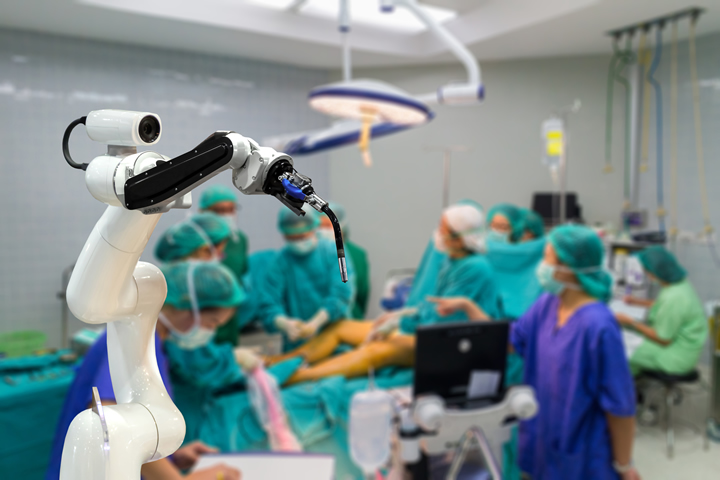Do you know what a cobot is? If you’ve been in a hospital lately, you’ve met one. They’re quiet and efficient and can work alongside humans without posing a danger. In this article, we’ll take a closer look at cobots and see how they’re helping to make hospitals safer and more efficient. Stay tuned.
What are Cobots?
Cobots, or collaborative robots, are a relatively new technology quickly gaining popularity. These intelligent machines can interact with human workers safely and efficiently, making them ideal for many tasks. Compared to conventional robots, cobots have several key advantages. For one, they can sense and respond to the movements of nearby people, avoiding collisions through their advanced sensor systems.
Additionally, their low cost and ease of programming make cobots an attractive option for small businesses looking to automate their operations. Overall, cobots offer a powerful new tool for enhancing workplace efficiency and safety, making them an exciting new technology that will play a crucial role in the future of automation.
How do Cobots Help Doctors?
Cobots are already starting to make a significant impact in the medical field. One of the primary ways they’re being used is to assist surgeons with delicate procedures. By providing an extra pair of hands, cobots can help surgeons to avoid fatigue and maintain a high level of precision throughout long surgeries.
In addition, cobots can be programmed to perform specific tasks, such as closing incisions or applying dressings. It frees up the surgeon’s time so they can focus on the more critical aspects of the surgery. Rehabilitation centers also use Cobots to assist with physical therapy exercises. In this setting, cobots can help patients regain strength and mobility after an injury or a long illness.
Overall, cobots are a valuable asset in the medical field, enhancing the safety and efficiency of hospital operations.
How Do Cobots Help Make Hospitals Safer?
Cobots help to make hospitals safer in several ways. First, their ability to sense and respond to nearby people’s movements helps avoid collisions and other accidents. Additionally, cobots can be programmed to perform specific tasks, such as closing incisions or applying dressings. It helps to free up the surgeon’s time so they can focus on the more critical aspects of the surgery.
Finally, rehabilitation centers also use cobots to assist with physical therapy exercises. In this setting, cobots can help patients regain strength and mobility after an injury or a long illness. By providing this level of assistance, cobots are helping to make hospitals safer for patients and staff.
What Are The Benefits Of Using Cobots In Hospitals?
There are many benefits of using cobots in hospitals. Cobots help to make hospitals safer by avoiding collisions and other accidents. Additionally, they can be programmed to perform specific tasks such as closing incisions or applying dressings. It helps to free up the surgeon’s time so they can focus on the more critical aspects of the surgery.

Cobots are also used in rehabilitation centers to assist with physical therapy exercises. In this setting, cobots can help patients regain strength and mobility after an injury or a long illness. By providing this level of assistance, cobots are helping to make hospitals more efficient in using staff time and resources.
Overall, cobots offer a powerful new tool for enhancing workplace efficiency and safety, making them an exciting new technology that will play a critical role in the future of automation.
What Are The Risks Associated With Using Cobots In Hospitals?
There are several risks associated with using cobots in hospitals. First, if they are not correctly programmed, they could collide with patients or staff, leading to severe injuries. Additionally, if they are not used correctly, they could cause surgical errors or other mistakes. Finally, if cobots are not well-maintained, they could malfunction and cause accidents.
These risks can be mitigated by proper training and maintenance of the cobots. However, it is crucial to be aware of these risks before implementing a cobot program in a hospital setting.
In Conclusion
There are many benefits to using cobots in hospitals. They help to make hospitals safer by avoiding collisions and other accidents. Additionally, they can be programmed to perform specific tasks such as closing incisions or applying dressings. It helps to free up the surgeon’s time so they can focus on the more critical aspects of the surgery.
Rehabilitation centers also use Cobots to assist with physical therapy exercises. In this setting, cobots can help patients regain strength and mobility after an injury or a long illness. By providing this level of assistance, cobots are helping to make hospitals more efficient in using staff time and resources.
You may also like
-
AI-Driven Solutions in Semiconductor Metrology: Transforming Precision and Efficiency
-
The Impact of Tech Mergers and Acquisitions on the Industry
-
How to Keep Your Audience Engaged Across All Social Platforms?
-
How Red Light Therapy Can Help Your Health Issues: Conditions It Can Help
-
Best Robot Vacuum 2023 – 6 Reasons Why It’s Worth The Money

